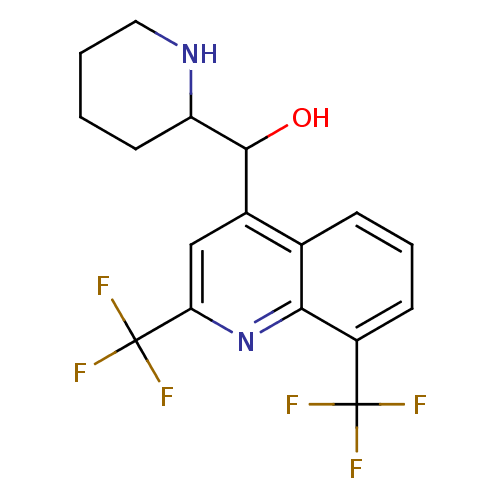 Found 5 Enz. Inhib. hit(s) with Target = 'Potassium voltage-gated channel subfamily H member 2' and Ligand = 'BDBM50022889'
Found 5 Enz. Inhib. hit(s) with Target = 'Potassium voltage-gated channel subfamily H member 2' and Ligand = 'BDBM50022889' TargetPotassium voltage-gated channel subfamily H member 2(Homo sapiens (Human))
China Pharmaceutical University
Curated by ChEMBL
China Pharmaceutical University
Curated by ChEMBL
Affinity DataIC50: 2.60E+3nMAssay Description:Inhibitory concentration against IKr potassium channelMore data for this Ligand-Target Pair
TargetPotassium voltage-gated channel subfamily H member 2(Homo sapiens (Human))
China Pharmaceutical University
Curated by ChEMBL
China Pharmaceutical University
Curated by ChEMBL
Affinity DataIC50: 5.50E+3nMAssay Description:Inhibition of human ERGMore data for this Ligand-Target Pair
TargetPotassium voltage-gated channel subfamily H member 2(Homo sapiens (Human))
China Pharmaceutical University
Curated by ChEMBL
China Pharmaceutical University
Curated by ChEMBL
Affinity DataIC50: 5.62E+3nMAssay Description:Inhibition of human Potassium channel HERG expressed in mammalian cellsMore data for this Ligand-Target Pair
TargetPotassium voltage-gated channel subfamily H member 2(Homo sapiens (Human))
China Pharmaceutical University
Curated by ChEMBL
China Pharmaceutical University
Curated by ChEMBL
Affinity DataIC50: 5.62E+3nMAssay Description:Inhibition of human ERG expressed in CHO cells by whole cell patch clamp techniqueMore data for this Ligand-Target Pair
TargetPotassium voltage-gated channel subfamily H member 2(Homo sapiens (Human))
China Pharmaceutical University
Curated by ChEMBL
China Pharmaceutical University
Curated by ChEMBL
Affinity DataIC50: 5.62E+3nMAssay Description:Inhibitory concentration against potassium channel HERGMore data for this Ligand-Target Pair
